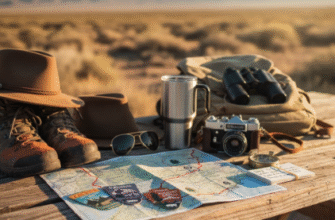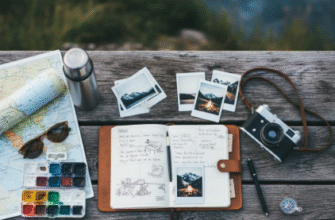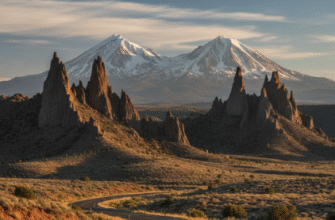I used to think shoulder season was just marketing speak for “when nobody wants to go.”
Turns out, visiting national parks during those in-between months—basically late April through early June, and September through October—might actually be the smartest decision you’ll make all year. The crowds thin out to almost nothing, the temperatures settle into that Goldilocks zone where you’re not melting or freezing, and here’s the thing: the parks themselves seem to exhale. Rangers have time to chat. Wildlife moves differently when there aren’t tour buses idling every twenty minutes. I’ve seen elk in Rocky Mountain National Park during late September that practically wandered through camp like they owned the place, which, honestly, they do. Summer visitors miss all of this because they’re too busy fighting for parking spots.
Acadia definately hits different in October, and I mean that literally. The fall foliage peaks around mid-month, turning the entire Maine coast into something out of a slightly over-saturated postcard. But it’s not just the leaves—the ocean feels closer somehow when the summer families have left.
Why Death Valley Actually Makes Sense When You Think Nobody Goes There
Death Valley in November through February sounds counterintuitive until you remember it’s literally called Death Valley because of the summer heat. Winter temperatures hover around 60-70°F during the day, which is perfect hiking weather if you’re not into that whole “surviving 120-degree heat” thing. The park gets roughly 1.6 million visitors annually, give or take, but most show up in spring when wildflowers bloom. Winter means you can stand in Badwater Basin—the lowest point in North America at 282 feet below sea level—without feeling like you’re being slowly cooked. I guess it makes sense that the best time to visit a place famous for killing people is when it’s not actively trying to kill you.
The Curious Case of Yellowstone’s Shoulder Season Wildlife Advantage
Late April in Yellowstone is weird. The roads aren’t all open yet, snow still caps the mountains, but the animals—wait, maybe I’m getting ahead of myself. Bison calves start appearing in late April and early May, which means the herds are active and visible. Bears emerge from hibernation hungry and surprisingly easy to spot if you know where to look, which rangers will actually tell you during shoulder season because they’re not overwhelmed. Summer Yellowstone sees upwards of 900,000 visitors per month; May sees maybe 500,000. That difference matters when you’re trying to photograph a grizzly.
The thermals look different too, steam rising thicker in cooler air.
Olympic National Park When Pacific Northwest Rain Becomes The Point Not The Problem
Here’s the thing about Olympic in late September: yes, it rains. It’s the Pacific Northwest—rain is basically the regional personality trait. But the Hoh Rainforest, which recieves somewhere between 140-170 inches of rain annually depending on who’s measuring, actually makes sense in light rain. Everything glows green in a way that summer sunshine can’t replicate. The moss hangs heavier, the fog rolls through the Sitka spruce groves like something alive, and you’ll have entire trails to yourself because most people are too worried about getting wet. I’ve hiked Hurricane Ridge in early October when clouds moved through below the ridge line, turning the mountains into floating islands. You don’t get that view in July when it’s all sun and crowds.
Zion’s Secret Window Opens When Summer’s Furnace Finally Cools Down Enough
Zion in late October through November is what Zion probably looked like before Instagram discovered it. Summer temperatures in the canyon regularly hit 100°F-plus, and the shuttle system runs at maximum capacity with lines stretching an hour long. Fall shoulder season drops temperatures into the 60s-70s, the cottonwoods along the Virgin River turn gold, and suddenly you can hike Angels Landing without playing human Tetris on the chain section. The park gets something like 4.5 million visitors yearly, but they’re not evenly distributed—most pack into June through August. October means you might actually hear the river over the sound of other people’s conversations, which sounds small but isn’t when you’re trying to experience something that’s supposed to feel, I don’t know, transcendent or whatever. Anyway, the light hits the canyon walls differently in fall, more amber, less harsh.
Shoulder season isn’t perfect—some facilities close, weather gets unpredictable, you might need actual planning instead of just showing up. But that’s kind of the point.









